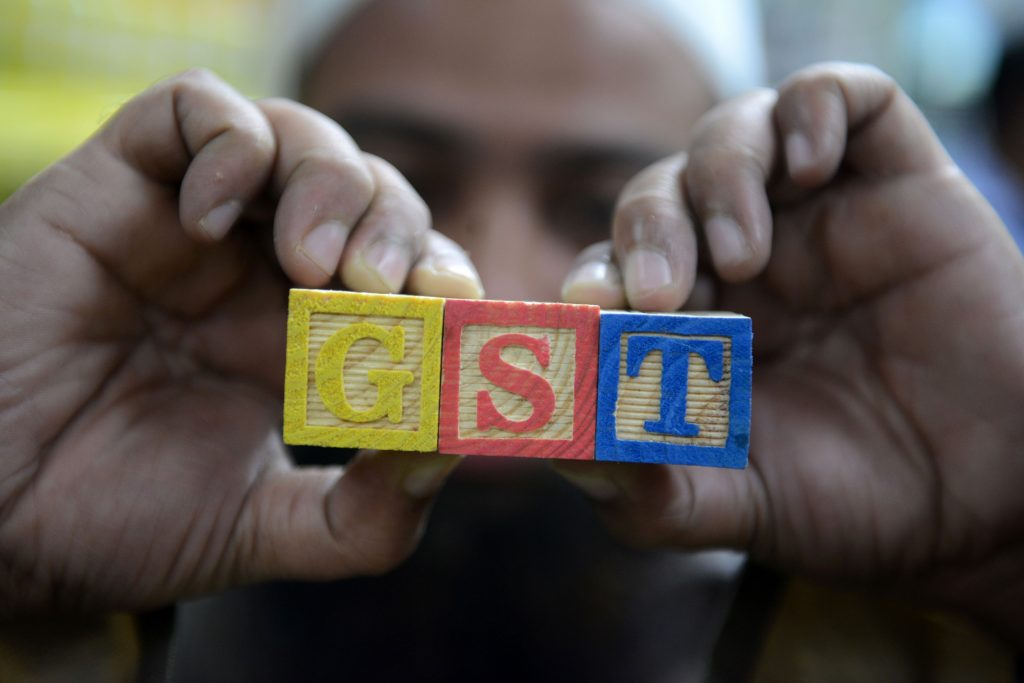The roll-out of Goods and Services Tax (GST) — an amalgamation of some 40 taxes and cess in a chaotic market spread over 35 states and Union Territories – was touted as the most-comprehensive market reform in the country. However, it is also seen that this unified tax system that took effect a year ago – 30 June, 2017, midnight — has not, as yet, come out of its teething troubles. The result is that the government’s attempt at eliminating the previous year’s chaos has only resulted in giving rise to new situations of more chaos and confusion in the market.
While the government claims the system has stabilised, confusion is widespread for the reason that enough of thought and planning did not go into the implementation of such a huge reform measure at the outset. Tax-evasion seems to have increased. A clear indication of that is the phenomenal growth in Swiss bank deposits by Indians in the last year. On the other hand, GST collection has been dismal compared with the target earlier set by the government. Clearly, even computerisation has not helped in clarifying the entire tax process. Government’s claim that the second year will be devoted to further simplification of the system seems far-fetched. Clarity is a matter of urgency but the way forward still remains unknown. It is said that a new single GST return form will replace the several forms, as at present, that continue to complicate the process. Also, it is claimed that GST Network (GSTN), now controlled by private players, shall be brought under exclusive government control. These changes seem very unlikely.
The problems that cropped up in the first year were one too many. Multiple tax slabs, multiple returns, multiple rules, quarterly filing of returns — against the previous system of annual filing — have all made the process messy for the lower rungs of trade and business that functioned with limited manpower and resources. The GST filing itself has become a full-time job. Instead of coming up with a largely complicated process, the aim from the very start of the roll-out should have been to introduce a simplified system. The result is widespread confusion. Especially the chaos brought about by changes in the GST slabs on multiple (at least 77) products in the past year, demonstrates how unprepared the government was in implementing the new tax system.
A lot of small traders and businesses have now to depend on professional firms to file returns, unable as they are to comprehend details of the new process. Unorganised sector unfortunately showed a tendency to stay out of the GST regime, also for the reason that registration itself was not easy. The stipulation for filing of return on specific dates with a small window is resulting in the clogging of servers. This ends up creating further panic as the penalties for delay are heavy. This also shows that an unprepared hardware system is expected to do bulk processing of billions of transactions that it is not capable of handling.
On another note, the revision of GST slabs has been happening constantly, baffling people and leaving scope for the government to dole out favours to particular sectors. In effect, the confusion on the part of the government has been passed on to traders and small businesses.
It must be admitted that GST in essence could have been, if implemented properly, a big boon to businesses large and small. But the hurried and ham handed manner in which it was carried out has left everything crippled in its wake. It must also be noted that as petroleum products have not come under GST, their prices are constantly on the rise, putting the common man to greater difficulties.
The markets have suffered immensely. Demonetisation and GST came in quick succession, giving a death blow to the national economy. The past two years, thus, have been terrible for the markets. For a nation like India, this is no small period. Perceptions are growing that there was total mismanagement on the part of the Centre. The weakening of the rupee against dollar is a pointer to the grim scenario. The government should have been wiser – and known as much that playing around with systems in India, where people are generally not tech-literate, is playing with fire. Little wonder that top economic advisers to the government such as Panagariya and Subramaniam have been at their wits’ end — and have opted to quit their jobs. Their actions may probably have been because of their inability to perform in a stressful atmosphere where the political leadership is in a great hurry but has no clarity of vision as to where it wants the country to go.
